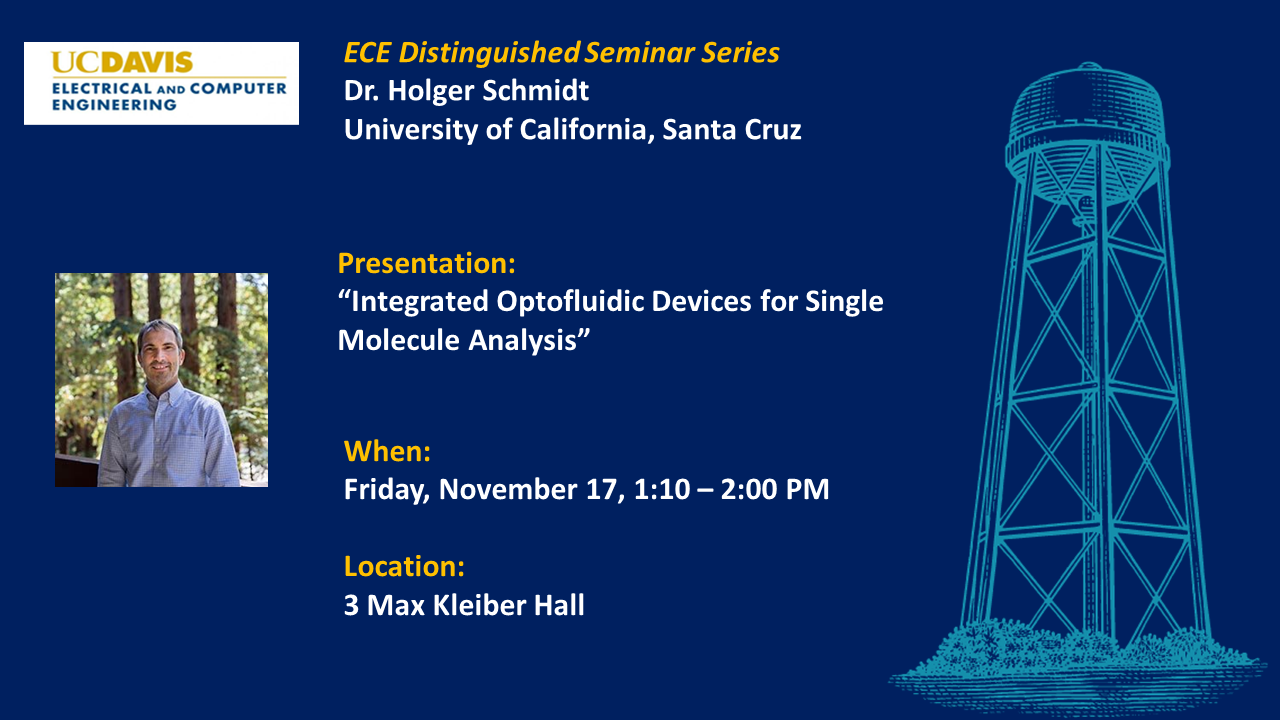
Event Date
Abstract:
Lab-on-chip devices have long held the promise of providing a convenient and rapid way to analyze small amounts of biological samples. However, when pushed to the ultimate limit of single molecule sensitivity, the detection mechanism is often based on off-chip elements. I will discuss a chip-scale platform that offers both integrated optical and electrical single molecule analysis. Optical integration is achieved by using liquid-core waveguides interfaced with traditional photonic elements to implement advanced functionalities. Examples include multiplex detection of single viruses, simultaneous detection of proteins and nucleic acid biomarkers, and front-to-back sample handling and single DNA detection on a single chip. Electrical single detection capabilities such as trapping enhanced particle sensing are demonstrated. The combination of both optical and electrical detection modalities results in a novel, high throughput platform for single molecule analysis. Specifically, I will review ultrasensitive performance using the example of both fluorescence and label-free detections of SARS-CoV-2 form clinical nasal swab samples with single molecule sensitivity. In addition, I will discuss approaches geared at adapting this platform for point-of-care use, including novel signal analysis algorithms an implementation of real-time analysis of single-molecule fluorescence signals.
Bio:
Holger Schmidt is a Distinguished Professor of Electrical and Computer Engineering and the Narinder Kapany Chair of Optoelectronics at UC Santa Cruz. He received an M.S. degree in physics from the University of Stuttgart, Germany, in 1994, and M.S. and Ph.D. degrees in electrical and computer engineering from the University of California, Santa Barbara, in 1995 and 1999 respectively. He was a Postdoctoral Fellow at the Massachusetts Institute of Technology, Cambridge before joining UCSC in 2001. He served as Associate Dean for Research for the School of Engineering and Director of the W.M. Keck Center for Nanoscale Optofluidics. Prof. Schmidt has authored over 400 publications and several book chapters in various fields of optics and photonics. He also edited the first Handbook of Optofluidics published with CRC Press. His research interests include single molecule detection and analysis in optofluidic devise, hollow-core waveguide photonics, nanopore sensors, nan-magneto-optics, and spintronics. He received an NSF Career Award in 2002, a Keck Futures Nanotechnology Award in 2005, and the Engineering Achievement Award of the IEEE Photonics Society in 2019. He was elected Fellow of the Optical Society of America in 2014, Fellow of the IEEE in 2017, and Fellow of the National Academy of Inventors in 2019.

